AMD Zen 3 Ryzen Deep Dive Review: 5950X, 5900X, 5800X and 5600X Tested
by Dr. Ian Cutress on November 5, 2020 9:01 AM ESTCPU Tests: Encoding
One of the interesting elements on modern processors is encoding performance. This covers two main areas: encryption/decryption for secure data transfer, and video transcoding from one video format to another.
In the encrypt/decrypt scenario, how data is transferred and by what mechanism is pertinent to on-the-fly encryption of sensitive data - a process by which more modern devices are leaning to for software security.
Video transcoding as a tool to adjust the quality, file size and resolution of a video file has boomed in recent years, such as providing the optimum video for devices before consumption, or for game streamers who are wanting to upload the output from their video camera in real-time. As we move into live 3D video, this task will only get more strenuous, and it turns out that the performance of certain algorithms is a function of the input/output of the content.
HandBrake 1.32: Link
Video transcoding (both encode and decode) is a hot topic in performance metrics as more and more content is being created. First consideration is the standard in which the video is encoded, which can be lossless or lossy, trade performance for file-size, trade quality for file-size, or all of the above can increase encoding rates to help accelerate decoding rates. Alongside Google's favorite codecs, VP9 and AV1, there are others that are prominent: H264, the older codec, is practically everywhere and is designed to be optimized for 1080p video, and HEVC (or H.265) that is aimed to provide the same quality as H264 but at a lower file-size (or better quality for the same size). HEVC is important as 4K is streamed over the air, meaning less bits need to be transferred for the same quality content. There are other codecs coming to market designed for specific use cases all the time.
Handbrake is a favored tool for transcoding, with the later versions using copious amounts of newer APIs to take advantage of co-processors, like GPUs. It is available on Windows via an interface or can be accessed through the command-line, with the latter making our testing easier, with a redirection operator for the console output.
We take the compiled version of this 16-minute YouTube video about Russian CPUs at 1080p30 h264 and convert into three different files: (1) 480p30 ‘Discord’, (2) 720p30 ‘YouTube’, and (3) 4K60 HEVC.
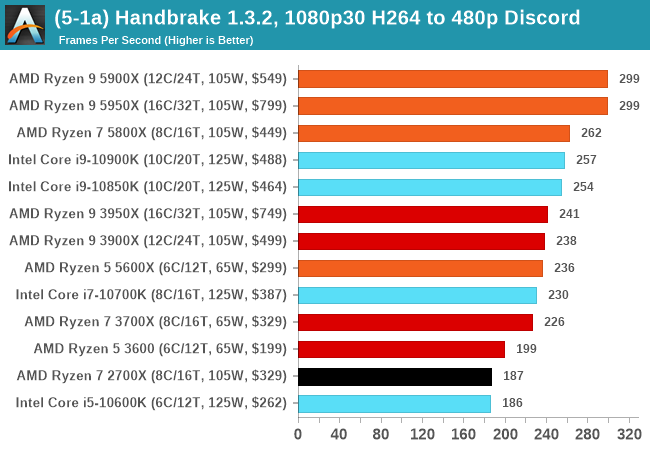
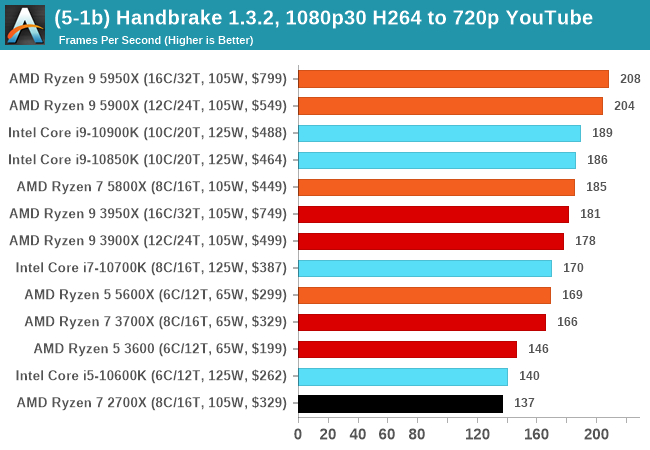
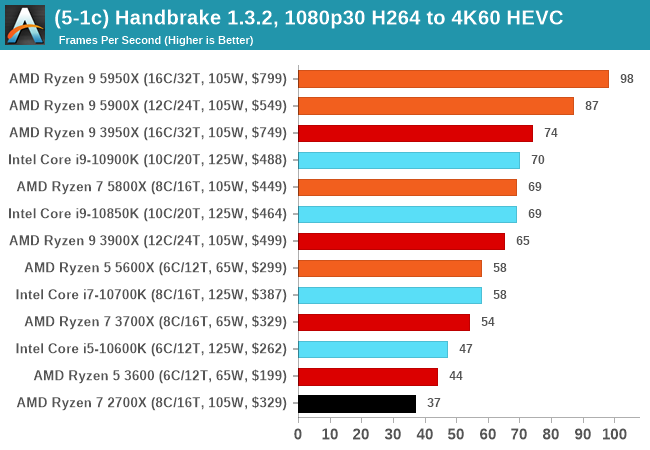
7-Zip 1900: Link
The first compression benchmark tool we use is the open-source 7-zip, which typically offers good scaling across multiple cores. 7-zip is the compression tool most cited by readers as one they would rather see benchmarks on, and the program includes a built-in benchmark tool for both compression and decompression.
The tool can either be run from inside the software or through the command line. We take the latter route as it is easier to automate, obtain results, and put through our process. The command line flags available offer an option for repeated runs, and the output provides the average automatically through the console. We direct this output into a text file and regex the required values for compression, decompression, and a combined score.

AES Encoding
Algorithms using AES coding have spread far and wide as a ubiquitous tool for encryption. Again, this is another CPU limited test, and modern CPUs have special AES pathways to accelerate their performance. We often see scaling in both frequency and cores with this benchmark. We use the latest version of TrueCrypt and run its benchmark mode over 1GB of in-DRAM data. Results shown are the GB/s average of encryption and decryption.
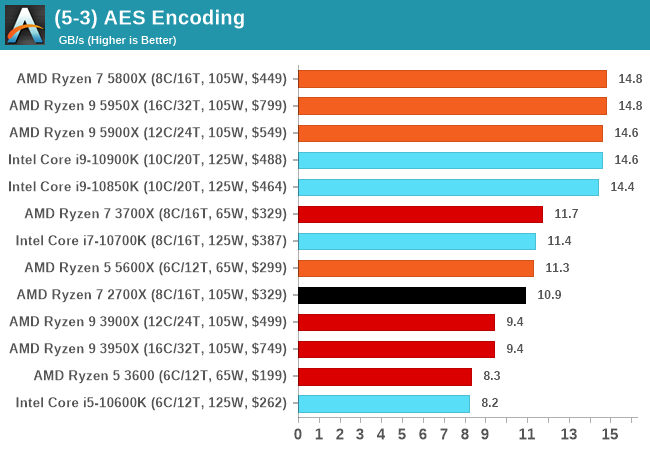
WinRAR 5.90: Link
For the 2020 test suite, we move to the latest version of WinRAR in our compression test. WinRAR in some quarters is more user friendly that 7-Zip, hence its inclusion. Rather than use a benchmark mode as we did with 7-Zip, here we take a set of files representative of a generic stack
- 33 video files , each 30 seconds, in 1.37 GB,
- 2834 smaller website files in 370 folders in 150 MB,
- 100 Beat Saber music tracks and input files, for 451 MB
This is a mixture of compressible and incompressible formats. The results shown are the time taken to encode the file. Due to DRAM caching, we run the test for 20 minutes times and take the average of the last five runs when the benchmark is in a steady state.
For automation, we use AHK’s internal timing tools from initiating the workload until the window closes signifying the end. This means the results are contained within AHK, with an average of the last 5 results being easy enough to calculate.
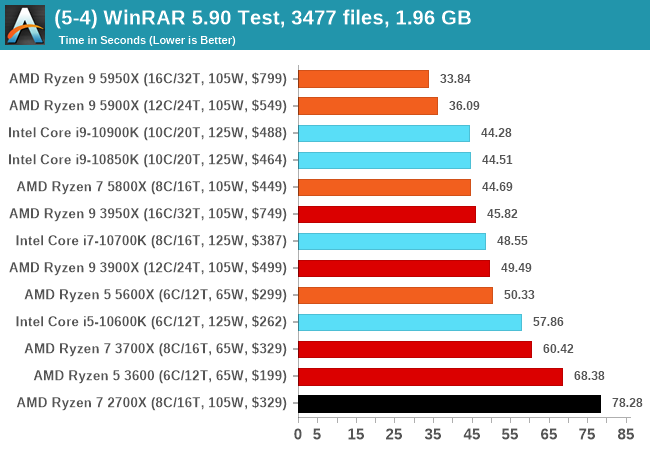


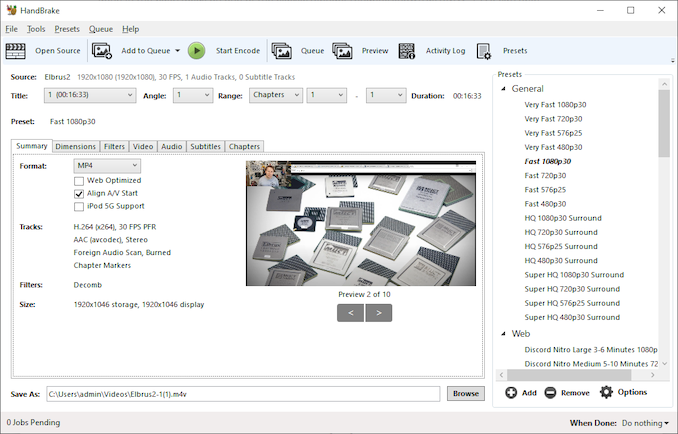
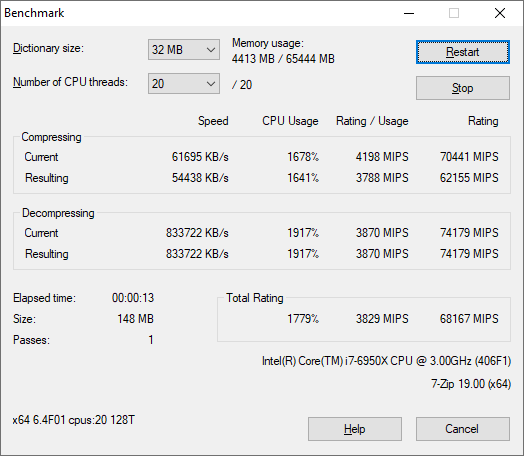
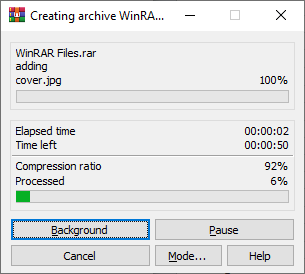








339 Comments
View All Comments
Smell This - Thursday, November 5, 2020 - link
AMD discounts old stock until gone __ it is hard to keep up.
I prefer *less than bleeding edge* __ the example you have given is the Ryzen 5 3600.
$149.06 at Amazon has me interested {| ;--|)
nandnandnand - Thursday, November 5, 2020 - link
3600X was $250 at launch. You are comparing a discounted 3600 price to a newly released CPU... of a higher tier (non-X vs. X)... during a pandemic with mostly heightened tech prices.Prices will come down, and Ryzen 5 5600 is rumored to come in at $220 in early 2021.
Smell This - Thursday, November 5, 2020 - link
You have to back that up ~~~ LOL
The Ryzen 5 5600x is butting heads with the i7-10770K at $387 (or $88 less). Is this one of your Ass Facts?
nandnandnand - Thursday, November 5, 2020 - link
It will come down just like Ryzen 3000 CPUs went down. Probably in response to Rocket Lake in Q1.Smell This - Thursday, November 5, 2020 - link
I don't know.
The AMD product mix is seriously stout with last gen with +2 threads. a 3700X is killer and comparable to the new 5600X. There will be a 5600 but at $260 will slobber-knock Intel 6-core
silverblue - Thursday, November 5, 2020 - link
nandnandnand did say it was a rumour, so there's no need to be rude. A quick search on Google brought up articles on The Guru of 3D, KitGuru, TweakTown, OC3D, NotebookCheck and TechPowerUp, either referring to a Korean translation or a table from VideoCardz.com. One theory is that AMD is waiting for 400-series BIOS updates to be released.Smell This - Thursday, November 5, 2020 - link
Backed up by WCCF ?? LOL
~~ you guys have bumped your heads
silverblue - Friday, November 6, 2020 - link
And you're just a troll with no counter-argument, and nothing of interest to add.Smell This - Friday, November 6, 2020 - link
Troll? LOLOnce again, you guys have bumped your heads. It is all a circle-jerk that links back to itself and WCCF
"Source: @harukaze5719 via Wccftech"
"Please note that this post is tagged as a rumor."
"Recently, this article was posted, but I couldn't find the post's source. 😭 My search ability is still low…"
Bigger LOL __ You included searches that have nothing to do with NotebookCheck and TechPowerUp
Who is the TROLL??? HA!
Go away
silverblue - Friday, November 6, 2020 - link
1) The word "rumor" has been emphasised on various occasions. How you're struggling to comprehend that is beyond me.2) AMD will launch lower-end parts within one or two quarters. It's what they've done since Zen came out in 2017.
3) NotebookCheck did indeed make a news post referencing harukaze5719
4) TechPowerUp did indeed credit the source of their news post to @harukaze5719